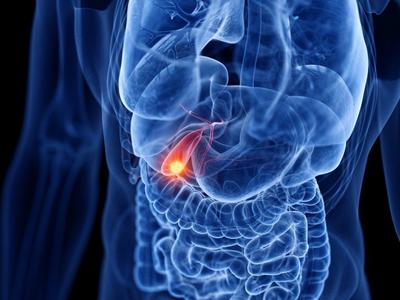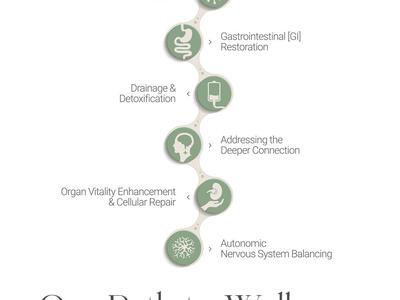Are Hidden Dental Infections Making You Sick?
When we think about chronic illnesses, such as cancer, heart disease and strokes, we tend to think about their cause. What can make us develop these diseases? Diet, lack of exercise, bad habits etc. Which to a certain extent is true. But what about the link between poor oral health and disease?
In the 1970s, Dr Ralph R. Steinman extensively researched tooth decay. He found, in an animal study on rats, that when a fluorescent dye was injected into the stomach, this same dye appeared in the inner chamber of the teeth within an incredible six minutes. Within an hour, the dye was visible within the tooth enamel.
This research provided conclusive evidence that there is an interaction between the oral cavity and how the body metabolises compounds. In this case, the compound was a dye, but the same link can be applied to nutrients from our food, and toxins from a poor diet, smoking, alcohol and drugs, legal or otherwise.
Later research demonstrated a link between specific teeth and specific organs. Together, this research showed a connection between poor oral health and chronic disease. Cancer, heart disease, lung disease, strokes, Lyme disease, MS, ALS and lupus were all linked in part with inadequate cleaning of the teeth and gums.
Tooth organ meridian chart
Achieving Better Dental Health
Eating a healthy diet and making time to exercise and de-stress are all things we can do to help protect us from illness – but just as important is good dental hygiene. Good dental hygiene is dependent on several factors, not just a correct brushing technique.
What we eat and how we metabolise nutrients so that we don’t have deficiencies is just as crucial. Being exposed to toxic levels of heavy metals and having hidden bacterial infections also play a role in poor dental health.
This means that we have control over the health of our mouths.
To maintain our oral health, we can adopt the following habits:
-
Eat a diet high in nutrient-dense, mineral-rich foods
-
Take steps, either on your own or with a specialist, to ensure these nutrients and minerals are properly absorbed and assimilated by the body
-
Ensure that you have a good brushing technique that cleans the gums as well as the teeth
-
Use a tongue scraper each morning to remove bacterial build-up
-
Opt for natural dental products to reduce the toxic load on the body
-
Join holistic dental surgery and replace harmful amalgam fillings and crowns with non-toxic ones
-
Learn oil pulling and gum massage techniques to reduce the risk of bacterial infections
Hidden mouth infection and chronic illness
Since infections of the mouth can lead to chronic health conditions, good oral hygiene is crucial. But some mouth infections can hideaway under crowns and implanted teeth or within root canals, jaw cavities and in the sockets of poorly removed teeth.
These infections may be symptomless and cause no pain or discomfort. As Science Daily reports, symptomless infections at the root tip of the teeth are very common and are often picked up during routine dental exams and x-rays. These can lead to heart disease and other conditions.
Brushing alone may not be enough to help keep bacteria at bay. So here are two simple techniques you can learn that can help you achieve a healthier mouth – oil pulling and gum massage.
Oil pulling
Oil pulling is an ancient dental health practice. It was first used in Indian Ayurvedic medicine to help prevent decay, freshen the breath, treat sore gums and eliminate dirt and bacteria
Studies show that oil pulling has a rightful place in today’s oral hygiene practices. One, in 2017, concluded that oil pulling is “effective in controlling plaque”. Another in 2009 found that oil pulling not only reduces plaque but reduces the bacteria that cause plaque and gingivitis (bleeding gums).
Streptococcus mutans is a bacterium commonly associated with dental cavities and poor oral health. A study in 2016 demonstrated that oil pulling significantly decreased the levels of this bacteria with no notable difference between these results and that of a control group using a common chlorhexidine mouthwash.
Oil pulling can also help reduce inflammation, whiten the teeth, prevent bad breath and detoxify the body.
How to practice oil pulling
Oil pulling is usually carried out using coconut oil. Place a teaspoon of oil in your mouth and swish it around using slow pulling motions for 15-20 minutes. You can do this whilst in the shower and performing other bathroom routines.
Once the oil has become milky and thin, spit the oil into some tissue and throw it in the bin. Don’t be tempted to spit it down the sink as this can lead to blockages. The used oil will contain dirt and bacteria, so avoid swallowing it too.
Adding essential oils will make this even more beneficial.
Here’s our favourite oil pulling recipe:
50ml fractionated coconut oil
5 drops peppermint oil
3 drops thyme oil
3 drops tea tree oil
3 drops clove oil
3 drops lemon oil
The only time we would not recommend oil pulling is when you have not yet removed amalgam fillings from your teeth. This is because doing so would release further heavy metals into your system.
Gum massage
Gum massage, using coconut or olive oil, stimulates blood flow to the gums which promotes healing of sore gums and improves overall teeth and gum health. These oils are naturally antimicrobial which helps prevent bacterial build up and the action of massage removes bacterial biofilm that may build up on the teeth. It’s also useful if oil pulling doesn’t suit you.
A study in 2014 found that gum massage using oil significantly reduced bacteria levels, plaque and gingivitis. What’s more, these results were again the same as those who used chlorhexidine mouthwash as a control.
To massage your gums, add two drops of ozonated olive oil to your finger and gently massage the length of your gums and all of your teeth, using a circular motion. Stop if you feel any pain. When you’ve finished, rinse with warm water, spit into a tissue and throw it away.
Considering all of this research it is vital for all of us to give greater attention to our oral health but even more important for those already suffering from a chronic illness.
For those who already know they have issues in their mouth, we now offer gum ozone injections here at our clinic in Cyprus to help target direct areas of infection in the gum. If you would like to know more about this new ozone therapy available at Neomed, please get in touch.
THE LINK BETWEEN ORAL HEALTH AND CHRONIC ILLNESS
Watch our video interview below with Dr Anna Maria Yiannikos a biological dentist from Yiannikos Centre for Holistic Dentistry in Nicosia, Cyprus as she talks about the link between oral health and chronic illness and how to address dental infections using a biological holistic approach.







